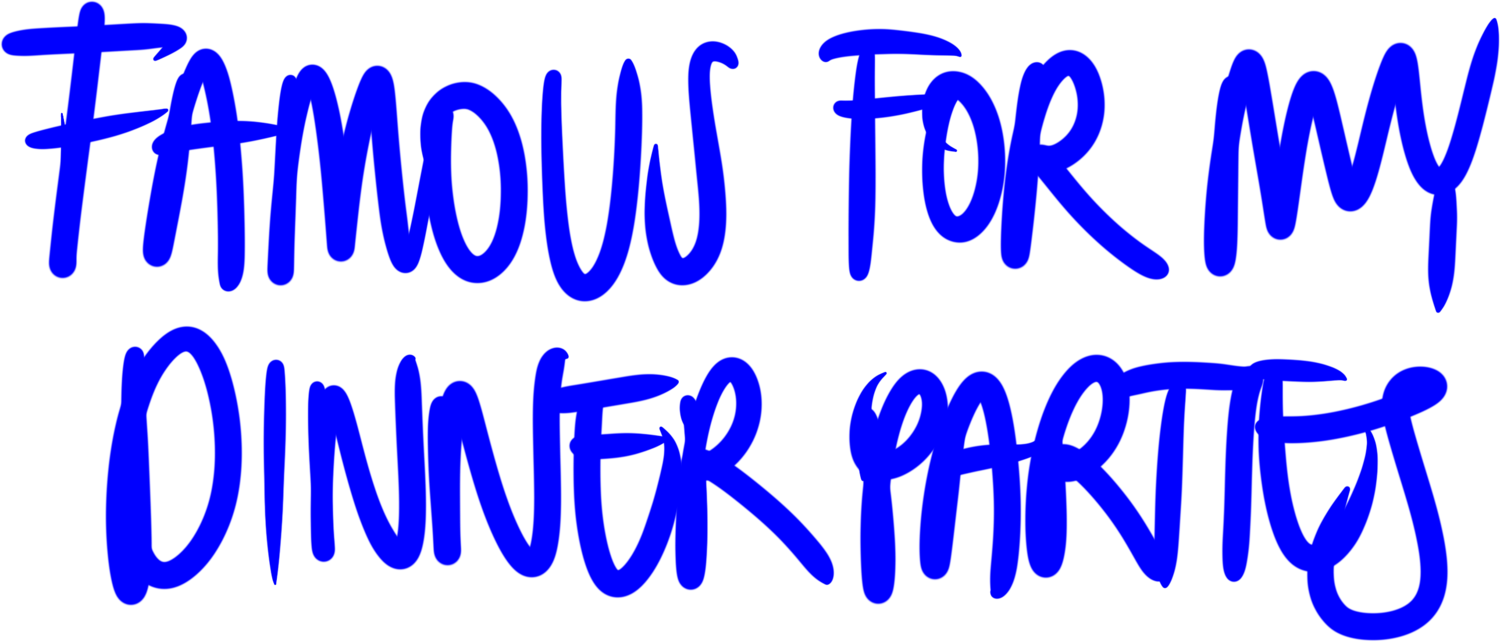A NINETEEN-EIGHTIES FOODSCAPE: FORTY-TWO YEARS OF FOODIES
It’s easy to understand why one would want to become an etymologist: Few things are more satisfying than tracing something—in this case a word— right back to its emergence. It’s equally interesting to follow a word’s path following the moment it was coined: some take time to pick up steam, or they never do (“Stop trying to make ‘fetch’ happen. It’s not going to happen.”) Others take the world by storm. 1982 saw the English language enriched with some unmistakably eighties vocabulary—VHS, veejay, camcorder. More significant four decades later, however, is New Yorker columnist Gael Greene’s entry into the dictionary of our times: the term foodie.
Today, the hashtag foodie has been used 241 million times on Instagram alone, significantly more than the hashtags VHS, veejay and camcorder combined—but the origin of the word is just as profoundly eighties. Much like the nineties had a fondness for the prefix “e-” for its neologisms (as in email, e-commerce), the eighties saw a string of lifestyles and subcultures defined, each with their appropriate -ie endings. Think yuppie, think preppie, think foodie. This type of word possibly references similar group descriptors of the late nineteen-sixties, such as hippie, groupie and folkie. Much like those words did in the sixties, the groups whose lifestyles the words yuppie, preppie and foodie describe had significant overlap during the eighties, a decade defined by a hunger for social climbing, the gathering of ever-greater material possession and seemingly shameless displays of wealth and status symbols: The young urban professional on the up and up dressed in Ralph Lauren according to Ivy League tradition, and ate lunch in the city’s finest restaurants—assuring reservations sometimes months in advance. The last remnants of nineteen-sixties countercultural ideals, still prevalent throughout the seventies, had seemingly fizzled out and materialism had free reign, creating the, as Tom Wolfe named it, “me generation”. At the dawn of the next decade, in 1991, Brett Easton Ellis published his perhaps most famous novel, American Psycho, a highly controversial book which aimed to capture and mock the vapidness of eighties’ materialism. The book’s protagonist and narrator, Patrick Bateman, lives in a world in which only beauty, success and abundance matter, and all the actual world’s ‘ugliness’ is met with rage because it ruins the illusion.
But even before the dust had settled, right when the storm was picking up even, there were people who were able to see right through what was happening. Only two years after the term foodie first appeared in the New Yorker, Ann Barr and Paul Levy’s The Official Foodie Handbook was published, a satirical handbook taking aim at those who never use a garlic press, who love “criminally under-age carrots”, who “read cookery books like novels”, whose vinegar is always raspberry-infused and who salivate over “restaurants, recipes, radicchio”. It, again, is only one entry into a genre: Published four years after The Official Preppy Handbook, it came out in the same year as The Official Yuppie Handbook. But what—and who—was this handbook for? It’s of course untrue to mark 1982 as the birth year of the food snobs, the picky eaters, the gluttons and gourmets. What differentiates the foodie from the gourmands and gourmets of yesteryears?
A foodie looks like everyone else, argue the authors Ann Barr and Paul Levy, and that seems to be the crux. Everyone can be a foodie whereas the term gourmet had been more exclusive to men of a certain age and, above all, of a certain class. But it’s not true, of course: everyone who has the time and money to explore a palate fine enough to differentiate garlic-press-pressed garlic from garlic minced with a knife is not fighting for their existence. Anyway, a foodie is also not a gourmand, with an insatiable appetite, who eats out of lust and greed instead of passion. The foodie has an intellectual interest in food, the foodie treats food like fashion. That’s what makes it so quintessentially eighties—or, more accurately, a product of the eighties that has not, unlike VHS tapes and veejays, since disappeared. It’s not about getting the reservation so one can go out for dinner, it’s about getting the reservation. It’s not about drinking a nice cup of coffee, it’s about drinking the coffee and knowing it's a Kenyan with the fruity acidity of green plums. It’s not about tender lamb chops, it’s about sous vide. It’s about reverse sear. Farm to table. Nouvelle cuisine. It’s about grounding the most ephemeral medium—food—in solid, material truths and perceived societal gains. That’s what the term foodie aimed to capture.
There was a backlash to it—of course there was. No one likes to be typecast, no one likes to be mocked, especially not the bearers of good taste. In the beginning it wasn’t entirely obvious whether the term should be embraced or shunned; certainly, Gael Greene doesn’t seem to have meant anything bad with it. After the book came out, that all changed: Being a foodie became something to deny. Still, however, the usage of the word as measured by occurrence in Google's book database was on the rise. Slow and steady at first, until it starts to grow very rapidly around the year 2000—all the way up to those 241 million hashtags on Instagram today.
For it was the internet that gave the foodie a worthy playground, a place to flaunt those reservations, a place to step into the shoes of the restaurant critic, a place where slow food could mean fast fame and lots of likes. “Everyone can be a foodie!”—and that seems to be the problem to some. If there ever was an industry of insiders that likes to keep outsiders out, it’s the food industry. In 2014, the New Yorker, the same publication that helped coin the term foodie thirty years earlier, publishes an essay by food critic and self proclaimed food insider John Lanchester titled Shut up and eat. In it, he disparages the word, and the general interest in food that has developed in the years since he started his first stint as a food critic in the nineties. “Food is my favorite thing to talk about and to learn about, but an interest that is reasonable on a personal and an individual scale has grown out of all proportion in the wider culture”, he writes. It’s like saying: I liked Adele before she became famous. Roberto A. Fordman takes this childish logic even a step further, writing in the Washington Post in 2016: “The problem with the word ‘foodie,’ which many have hopefully gleaned by this point, boils down to a simple truth: You can’t possibly call yourself a "foodie" if you’re actually a "foodie." There is a great irony in describing yourself as a food insider in a way no actual food insider ever would.”
It’s silly, of course. But there are real problems with the way food is treated in contemporary, Western societies—with ‘foodie-ism’, if you will—: ones that aren’t about being ‘in’ or ‘out’ or using the right words to describe oneself, problems to which the solution isn’t simply to “Stop calling yourself a foodie”, as Roberto A. Ferdman suggests. One real problem of food increasingly mimicking the structures of fashion (which isn’t to say food fads are something new), is that it takes food out of context. Jo Livingstone, writing in The New Republic, argues that the moment an ingredient, dish or entire cuisine becomes trendy—particularly if it does not stem from the dominant culture within a country—it is robbed of its cultural context and its value as food: a means of keeping us alive. What’s worse, the language surrounding these types of trend foods often feels neo-colonial in its persistence of, say, kimchi or bánh mì having been ‘discovered’, or it being a ‘novelty’. And then there’s the thing about trends: They always end, it’s the name of the game. Even the foodie can’t be interested in everything at once.
Most hobbies end after a while; we move on, our interests change. Even if they don’t, even if we keep on collecting Pokémon cards or doing crossword puzzles, these hobbies or interests are fairly inconsequential. The danger of treating food as a special interest is that it isn’t inconsequential, and an interest in it shouldn’t be special. In fact, the problem isn’t that too many people are interested in food; that there are too many foodies. It is that too many people are interested in too little of what food is. Sure, food is one of the great pleasures in life—or has the potential to be. But that is not all it is. If we see food as something that is only meant to bring pleasure, we’re inevitably not seeing the whole picture. Of course, it’s only those in privileged positions who are able to view food in this way. That is what food fetishisation is: an unreasonable focus on food’s potential to give pleasure. Food, in this aspect, is like sex: It’s fun to indulge, but we can’t shun the difficult conversations. It can be extremely pleasurable, but if we want to partake, we have to be interested in the bigger picture. We should question it, wonder who has ownership over what, who makes which decisions and what the bigger consequences of our diets are. If we don’t, we’re being irresponsible.
The nineteen-eighties, in that decade’s cultural celebration of egotism and self advancement, were fertile ground for foodies to turn food into a status symbol and marker of distinction. This wasn’t completely new of course, but it did become more accessible to the masses—it became trendy. Now, with ever more ways to share our lives with the world, ever more niche interests that have the potential to set one apart from the rest, it makes sense that nothing seems to be standing in between the foodies and their next meal. If only they could explore the whole palate, and not leave the bitterness out.
Text: Yannic Moeken
Foodies: Diana Avanesova, Tim Grützner, Ike Olle Haars, Samia Rachel, Maria Salichow, Mimi Schönefeld, Rosalie the dog, Yu Xi





